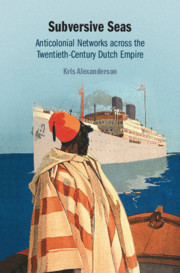Introduction
Transoceanic Mobility and Modern Imperialism
Published online by Cambridge University Press: 12 April 2019
Summary
- Type
- Chapter
- Information
- Subversive SeasAnticolonial Networks across the Twentieth-Century Dutch Empire, pp. 1 - 28Publisher: Cambridge University PressPrint publication year: 2019



